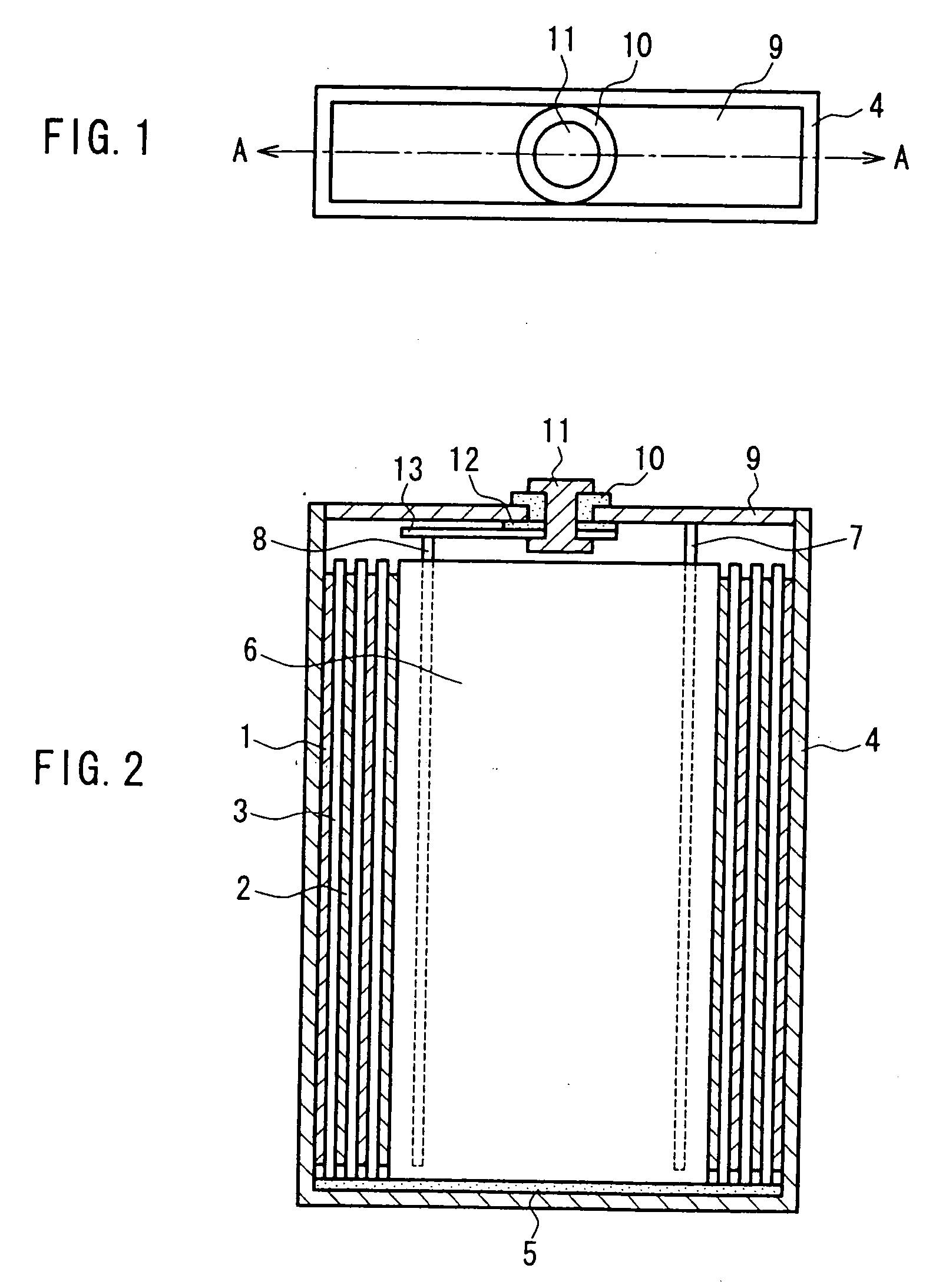Non-aqueous secondary battery and portable equipment using the same
a secondary battery and portable equipment technology, applied in the direction of secondary cells, non-aqueous electrolyte cells, cell components, etc., can solve the problems of insufficient effect of additives, decreased safety of additives, and increased energy density, so as to achieve excellent overcharging safety and less gas generation
- Summary
- Abstract
- Description
- Claims
- Application Information
AI Technical Summary
Benefits of technology
Problems solved by technology
Method used
Image
Examples
example 1
[0032] An electrolyte solution of the present example was prepared as follows. First, 1.2 mol / dm3 of LiPF6 was dissolved in a mixed solvent of EC and MEC (volume ratio 1:2). Furthermore, 5% by mass of fluorobenzene (FB) as a compound A and 0.1% by mass of biphenyl (BP) as a compound B were dissolved in the mixed solvent to prepare an electrolyte solution in which the content of BP with respect to FB was 2% by mass.
[0033] Next, a positive electrode was prepared as follows. First, 2.0 parts by mass of carbon black and 0.5 parts by mass of graphite (Trade Name “KS-6”, produced by Lonza Inc.) were added to 93.5 parts by mass of LiCoO2 having a surface area of 0.5 m2 / g, followed by mixing. The resultant mixture was added to a solution in which 4 parts by mass of polyvinylidene fluoride was previously dissolved in N-methyl pyrrolidone, followed by mixing, whereby a paste containing a positive mixture was prepared. Both sides of a positive electrode current-collector made of an aluminum f...
example 2
[0040] A prismatic non-aqueous secondary battery of the present example was produced in the same way as in Example 1, except that 2% by mass of 1,3-propanesultone (PS) further was dissolved in the electrolyte solution prepared in Example 1.
PUM
| Property | Measurement | Unit |
|---|---|---|
| porosity | aaaaa | aaaaa |
| voltage | aaaaa | aaaaa |
| open-circuit voltage | aaaaa | aaaaa |
Abstract
Description
Claims
Application Information
 Login to View More
Login to View More - R&D
- Intellectual Property
- Life Sciences
- Materials
- Tech Scout
- Unparalleled Data Quality
- Higher Quality Content
- 60% Fewer Hallucinations
Browse by: Latest US Patents, China's latest patents, Technical Efficacy Thesaurus, Application Domain, Technology Topic, Popular Technical Reports.
© 2025 PatSnap. All rights reserved.Legal|Privacy policy|Modern Slavery Act Transparency Statement|Sitemap|About US| Contact US: help@patsnap.com


